Best Plants for Attracting Bees, Butterflies and Hummingbirds to Your Garden
- Kimberly Gentry

- Jul 10, 2023
- 8 min read
Updated: Jun 9
When you're rushing to work sipping a grande coffee and enjoying a blueberry muffin, you have a pollinator to thank. Coffee and blueberries are among the long list of plants that rely on pollinators such as bees and butterflies, to reproduce.
Pollinators are responsible for “one out of every three bites we eat” and “essential to our ecological survival," according to the US Department of Agriculture.
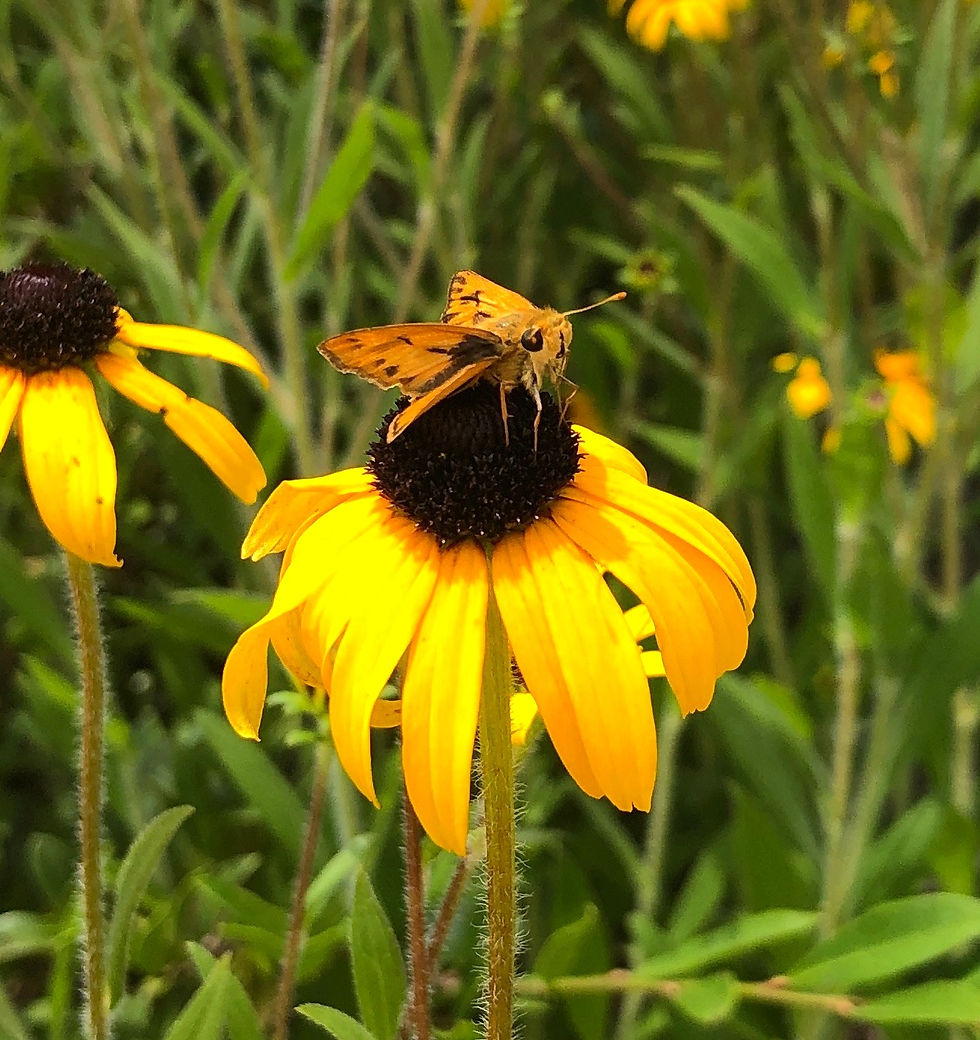
Unfortunately, pollinators – animals and insects that spread pollen from one plant to another – are having a tough time surviving. Honey bee populations, for example, have declined significantly in recent years.
Of the 4,000 native bee species in North America, over half are in decline and one in four are at risk of extinction according to The Bee Conservancy, a non-profit focused on bee survival.
The good news is anyone with a yard or a patio big enough for a few planting containers can help out pollinators. Using perennials (plants that come back every season) makes landscape gardening a little easier in the long run, but the same general guidelines also apply to picking one-season annuals.
Picking Plants for Bees, Butterflies and Hummingbirds
A key to a garden filled with the best plants for bees, butterflies and hummingbirds is picking plants that bloom at different times so there's food source available from spring through fall. These pollinators are especially active in the morning and in bright sunlight, so consider filling your yard with sun-loving plants. Have a shady yard? There are plenty of low-light plants pollinators like, as well.
Another important tip is to incorporate plants native to your area into your garden since many pollinators, especially native bees, depend on nectar and pollen that is specific to where they live. This is especially valuable in areas where lots of urbanizations has reduced natural pollinator habitats. These days, local garden centers and major retailers are making it easier to find native flowering plants by setting them aside in special sections in their nurseries.
Hummingbirds
• Attracted to flowers in red, pink, yellow, white and orange.
• Like funnel-shaped blooms that are perfect for dipping their long bill and tongue into.
Bees
• Favor flowers in bright white and shades of red, yellow, purple and blue.
• Rely on nectar for energy and pollen for protein, so are drawn to color patterns on blooms that indicate the location of nectar like a road sign.
• Prefer shallow blooms and flowers with easy, sturdy landing areas.
Butterflies
• Like bright colors, especially reds and purples.
• Choose flowers with wide landing pads; tubular, trumpet-shaped blooms; and spurs (nectar filled tubes that extend from the flower).
• If you want to support the threatened Monarch Butterfly during its spring migration, add native milkweed to your garden. Milkweed leaves are the only food source for Monarch caterpillars. Choose swamp milkweed, common milkweed or butterfly weed. Avoid tropical milkweed since its non-native. Tropical milkweed blooms at the wrong time, interfering with the monarch's migration timing. It can carry a parasite, as well. Milkweed blooms are also a nectar source for other pollinators.
Best Plants for Bees, Butterflies and Hummingbirds
Lucifer

This plant is just right for hummingbirds! They will delight in lucifer’s red blooms, which are also the perfect fit for their long, slim beaks.
Lucifer is a tall, striking bulb-like perennial with multiple long, red-tubular blooms on each stalk that emerge from wide, sword-like leaves. It's a hardy and showy addition to a garden.
• Blooms mid-to-late summer.
• Needs sun to partial shade.
• Grows about 40 inches tall and 18 inches wide.
• Planting zones 5-9.
Salvia (Sage)

Salvia is like candy for hummingbirds, bees and butterflies. This plant comes in an abundance of color and size varieties, each with small tubular blooms.
Black and blue salvia featuring dark blue, tubular blooms along a black stem is a gorgeous option. It's base foliage is full and dark green.
• Blooms from spring to first frost.
• Full sun to part shade.
• Grows 2-to-3 feet tall and wide.
• Planting zone 7-10.
Another great salvia option is radio red meadow sage. This sun-loving, drought-tolerant perennial is so easy you can practically plant it and forget it. Radio red looks great as a border plant with its petite, vibrant red flowers.
• Blooms late spring to fall
• Full sun.
• Grow about 16 inches tall and wide.
• Planting zones 5-9 (some varieties can handle colder climates).
For a long blooming option, pick Russian sage. This variety is a heat and drought-tolerant perennial shrub with pretty little spikes of purplish blooms and grayish-green leaves.
• Blooms summer into fall
• Full sun.
• Grows 2-to-4 feet wide and tall.
• Planting zones 5-9.
Coneflowers
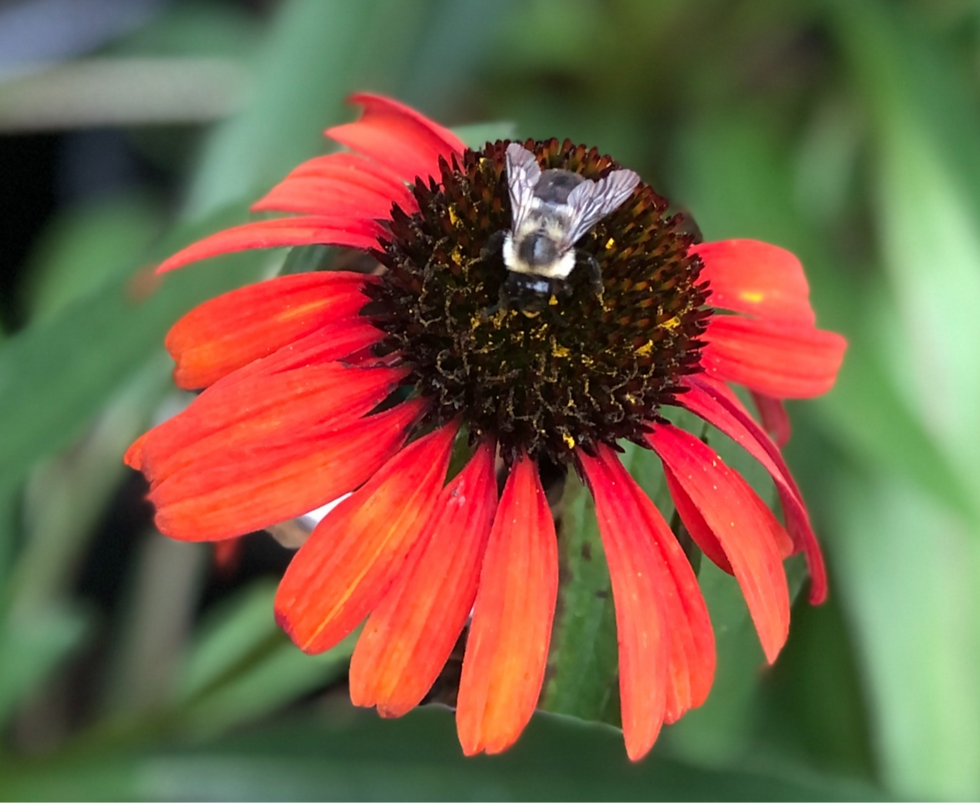
Pollinators love to visit coneflowers for a good drink of nectar. Its daisy-like petals surround a large nectar-rich, cone-shaped center called the disk.
Coneflowers grow on tall, strong stems and spread out creating a beautiful mass of color in the garden. Coneflowers love the sun and tolerate heat well.
• Blooms from early to late summer.
• Full sun.
• Grow 2-to-5 feet and about 1-to-2 feet wide.
• Planting zones 3-9.
Garden Phlox

A hummingbird or butterfly visiting a garden phlox is the kind of picture you’d expect to see in a storybook. This quaint plant, which bees love too, has dense masses of pretty, little blooms with tubular centers on tall upright stems.
Garden phlox is available in lots of color varieties including bright pink, lavender, red and even bicolored. It serves as a wonderful filler in planting beds and adds a “cottage garden” feel.
• Full sun, but likes some afternoon shade in hot climates.
• Blooms from late spring to fall.
• Grows 2 feet by 2 feet.
• Planting zones 4-8.
Daylilies

Each bloom on this perennial is like a big welcome sign to pollinators. Day lilies feature large, open blooms with deep nectar–filled centers.
Plus, daylilies grab the attention of pollinators with vibrant petal colors, such as scarlet, bright yellow, rose-red and gold. Daylilies are hardy, low maintenance plants that are an easy addition to any garden.
• Bloom in spring through summer.
• Full sun to partial shad (full sun generates the most blooms)
• Grows from 1-to-3 feet tall and wide.
• Planting zones 4-9.
Crape Myrtle

Crape myrtles, or spelled Crepe myrtles in the southern regions, are gorgeous in yards and perfect for hummingbirds, bees and butterflies with its abundance of blooms. Crape myrtles are low maintenance, easy-to-grow blooming trees or small bushy shrubs.
All varieties feature big, showy clusters of blooms. It’s also heat tolerant and loves the sun. Color choices for pollinators include red, white and bright pink.
• Blooms throughout summer.
• Full sun.
• Shrubs are mature at 2-to-5 feet; tallest tree variety can reach 25-to-30 feet.
• Planting zones 7-10.
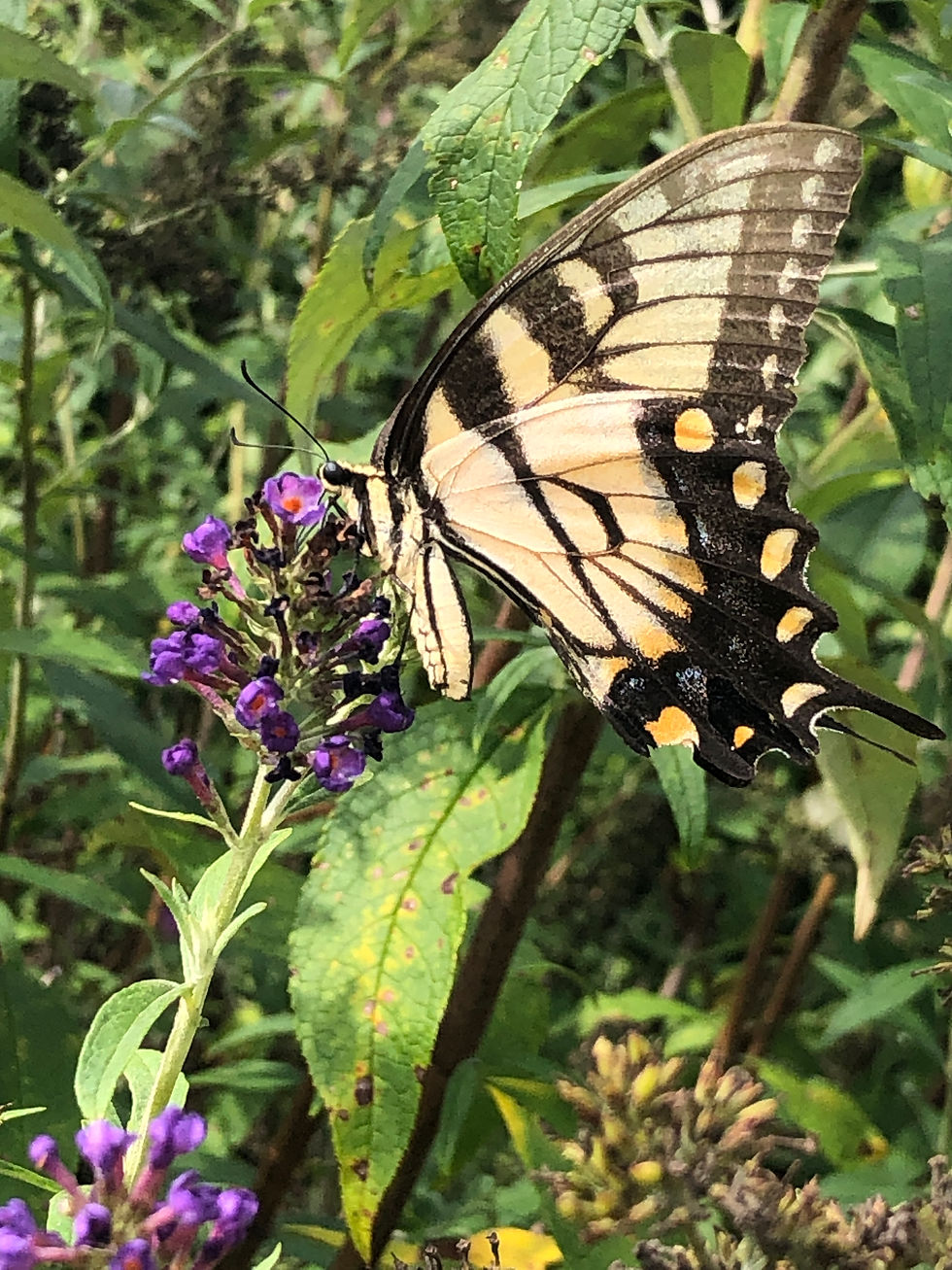
Butterfly Bush
This sun-loving and fast-growing shrub is loved by butterflies and other pollinators, but unfortunately they’re invasive in some areas and banned by 25 states. Noninvasive options are available like the Lo & Behold branded varieties and the Pugster blue.
Butterfly bushes are attention grabbing with fragrant, long spikes covered in a mass of colorful little blooms. Butterfly bushes can reach as much as 8 feet tall and 6 feet wide.
Pruning can easily control growth. But, for a shorter option choose a Pugster blue, which only grows about 24 inches tall and wide.
This plant has butterfly in the name for a reason - they love it! Consider adding milkweed as a companion plant. In addition to the monarch caterpillars, some other butterfly caterpillars and bugs feed on it, too.
• Blooms throughout summer.
• Full sun.
• Grows 6 to 8 feet tall and wide; shorter varieties stay around 24 inches.
• Planting zones 5-9.
Hydrangea
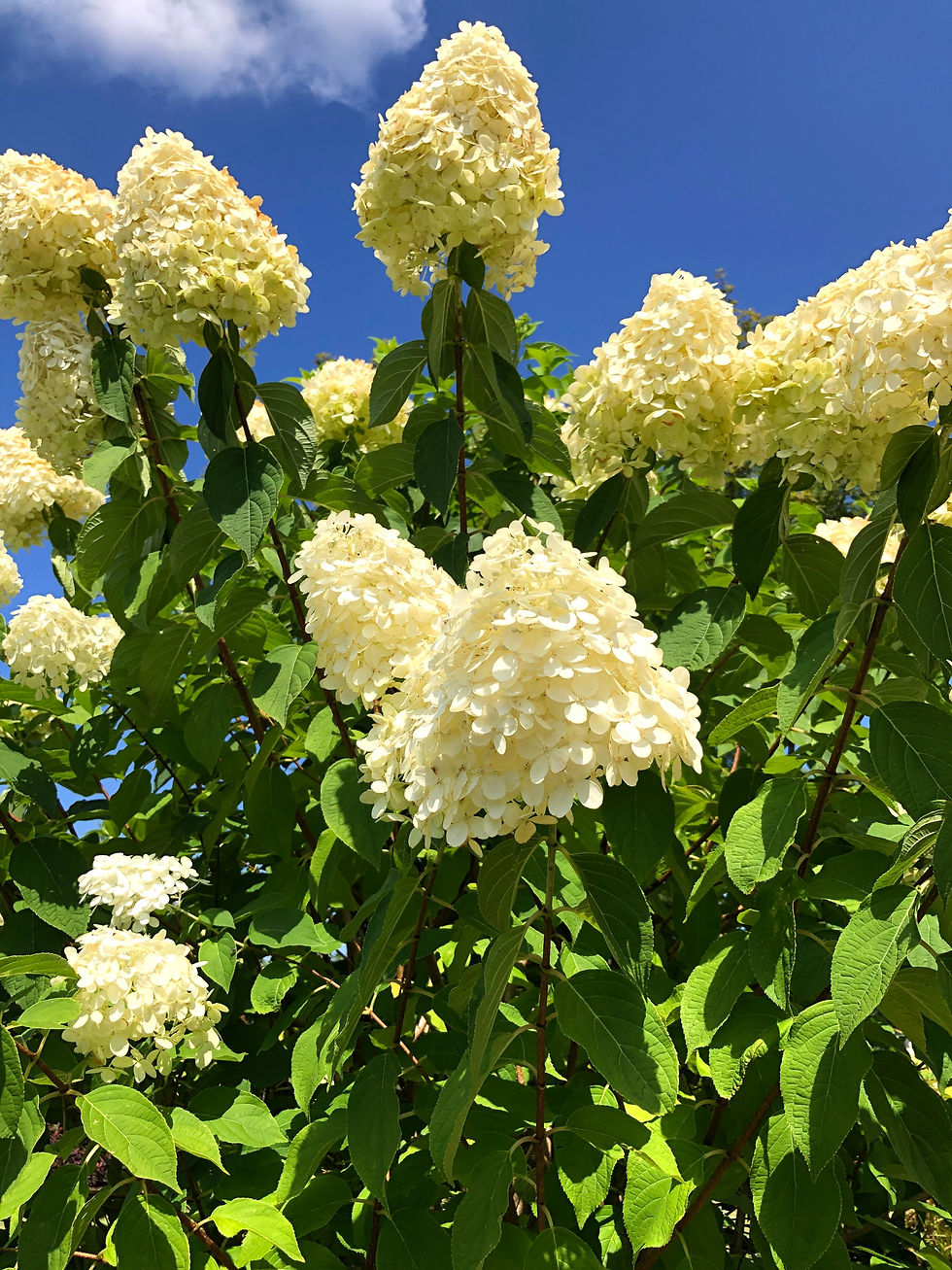
These beautiful and easy to maintain deciduous shrubs attract bees and other pollinating insects, but pick carefully! Some varieties like Mophead hydrangea are sterile so they lure bees in with showy flowers but lack nectar.
Instead, plant lacecap, smooth, climbing, panicle or oakleaf hydrangea. The often overlooked panicle Limelight hydrangea is an excellent choice, especially if you need something easy and reliable in a sunny yard.
Limelight's large, dense cones of white blooms on strong upright stems are popular among bees and other insects. One caveat, limelight is a self-fertilizing plant. The outside of the blooms are covered in sterile florets and the fertile ones with both male and female parts are inside. So, bees and bugs will bury themselves inside seeking nectar and pollen, but don't expect butterflies do the same - they aren't able to push past the dense exterior florets.
Prune late spring or early fall. Unlike many hydrangea, it blooms on new growth. Lack a green thumb? No problem, this hydrangea is practically no-fail!
• Blooms throughout summer.
• Full sun.
• Grows about 6 feet wide and tall.
• Planting zones 3-9.
Blanket Flower

The petals of the blanket flower are the perfect “we’re open” sign for bees. The flower’s yellow tips transition to a bright, red ring around a large, nectar-filled center cone. They also offer a wide and sturdy landing pad for bees.
Blanket flowers are hardy, sun-loving, drought tolerant perennials. They have a bushy shrub appearance and stay compact in size. Plant near purple Russian sage for a pretty color combination and a buffet feast for bees.
• Blooms from early summer through fall.
• Full sun.
• Grows about 12 inches tall and 12-to-18 inches wide.
• Planting zones 3-8.
Black-Eyed Susan

This cheerful, bright-yellow flower is a dependable plant for gardeners and pollinators. They require little care, fill in spaces nicely and add a big pop of color. For pollinators, they produce a prodigious amount of long lasting blooms with a large, center cone.
Honey bees love to hang out among black-eye susans, especially on hot, sunny summer mornings. Black-eyed susan is a sturdy plant, which makes landing for a long drink easy even on a windy day.
• Blooms all summer and into fall.
• Full sun.
• Grows 24 to 36 inches tall and wide.
• Planting zone 4-9.
Bee Balm
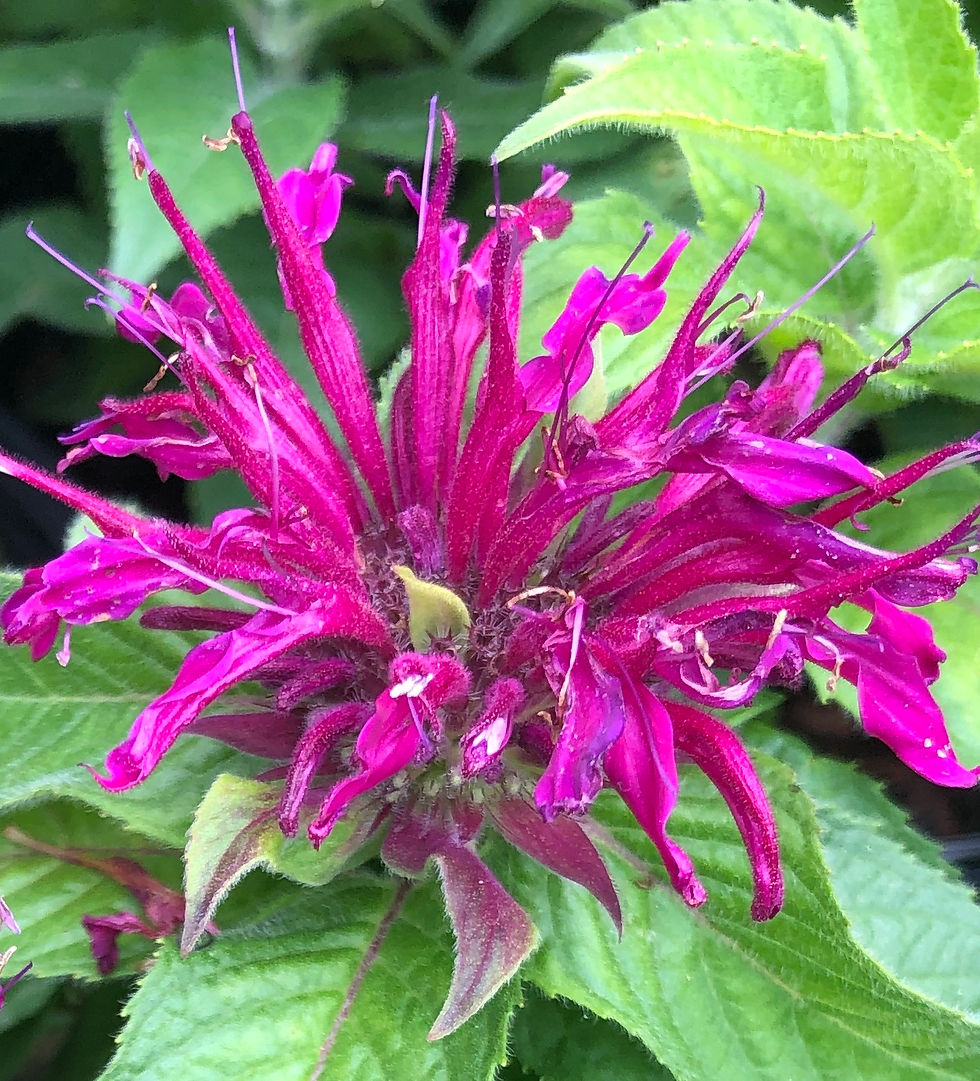
It's called Bee Balm for a reason! Bees love this fragrant perennial and its frilly petals in shades of red and purple. Bee balm plants grow best in at least six hours of sun. Otherwise, they won't produce as many blooms and may mildew.
• Blooms from early to late summer.
• Full sun.
• Grows about 11 inches tall and 12 inches wide.
• Planting zones 3-9.
Have More Shade Than Sun?
Pick these Shade Plants for Pollinators
Hosta

The pretty tubular and long blooms of hostas in shades of white, pink, lavender or blue draw in pollinators. Foliage ranges in shades of green or variegated with white. Hostas are perfect filler plants along walkways and house foundations.
• Blooms for several weeks between May and September depending on the variety.
• Dappled to partial sun
• Growth ranges from 7 inches tall and 15 inches wide and to several feet in height and width depending on the variety.
• Planting zones 3-9.
Coral Bells
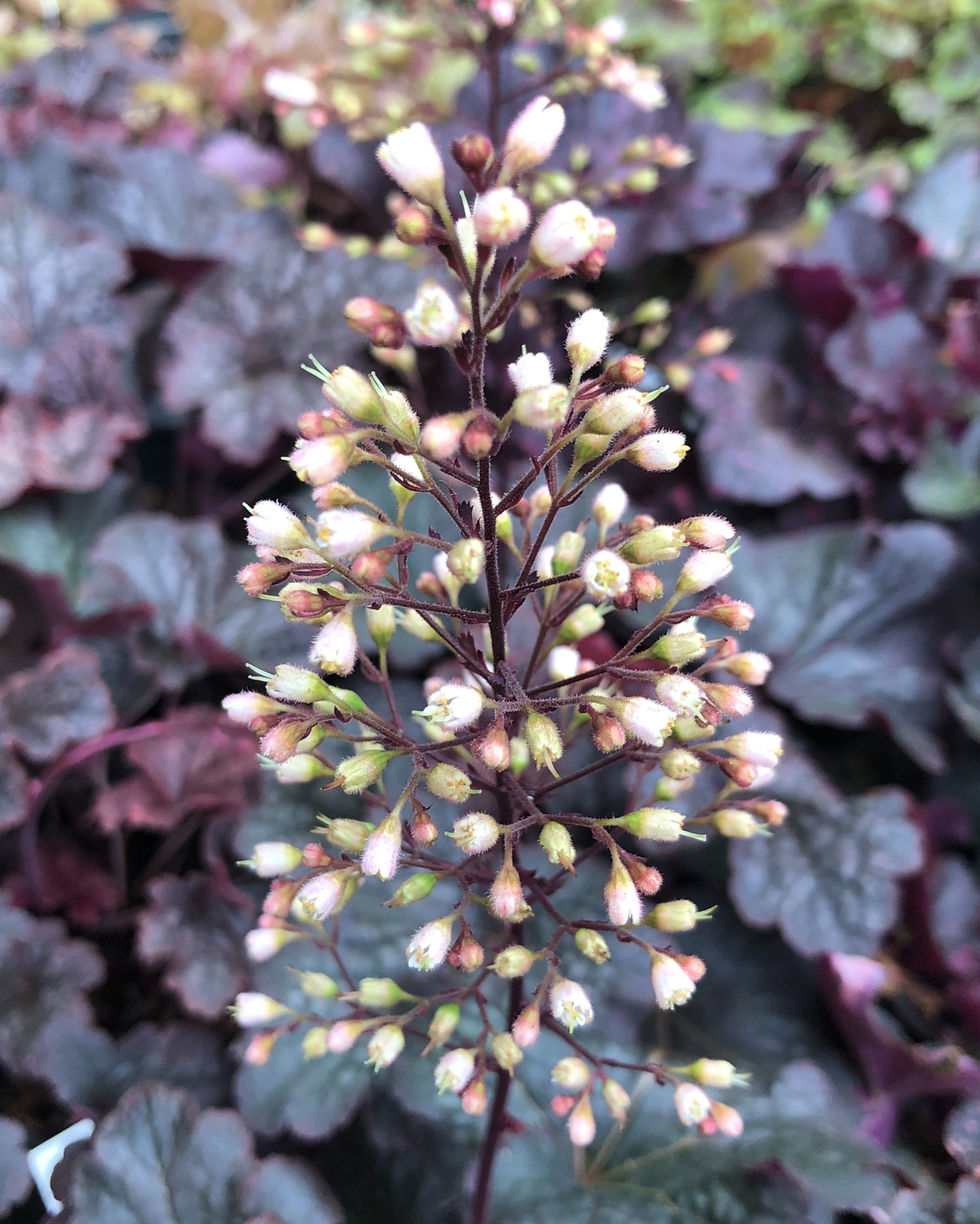
These plants offer beautifully-colored foliage for shady spots and clusters of bell-like blooms for pollinators. Coral bells grow with a mounding habit and foliage ranging from greens to shades of pink and purple.
Coral Bells shoot up tall, thin stalks topped with small bloom clusters in shades that often match the foliage. This plant can handle full sun to shade, but its colors are best when it gets at least 4 to 6 hours of sun. These plants are easy to grow and do well in gardens and containers.
• Blooms late spring to mid summer.
• Full sun to shade.
• Grow from 12 to 36 inches tall and about 15 inches wide.
• Planting zones 4-9.
Follow these tips and in no time, you’ll have a yard or container garden buzzing with bees, butterflies and hummingbirds. Plus, keep an eye out for other pollinators that also serve a vital role in plant reproduction, such as moths, beetles, wasps, and other birds and insects.
To learn more about pollinators, visit the Department of Agriculture’s Forest Service website for a wealth of information.






